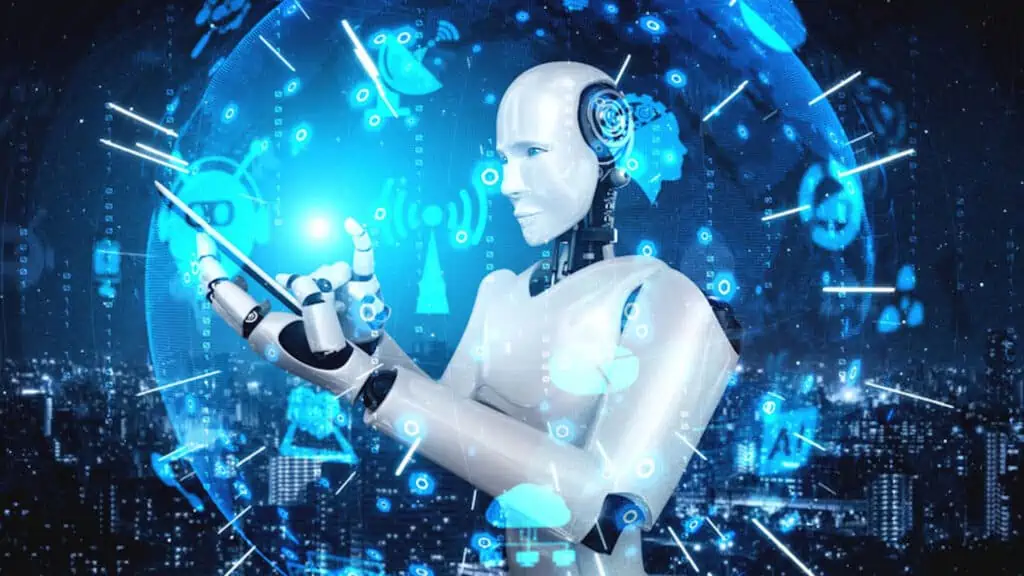It has been thirteen years since the term Industry 4.0 first appeared in public at the Hannover Messe in 2011. The term Industry 5.0 is now often used to refer to the “people-centeredness” of the industry.
Recently, however, the Industry 4.0 Research Advisory Council of the Federal Ministry of Economics felt compelled to criticize the use of this new term. The reason given: Industry 5.0 does not include any new content. The term Industry 4.0 stands for the fourth industrial revolution and its ongoing transformation, which encompasses all areas of society and also includes a human-centered approach. This still highly topical industrial model pursues the main goal of benefiting society and already encompasses new technologies, value creation models and the people involved, according to the research advisory board’s argumentation. A new term is therefore superfluous.
Manufacturing and distribution were at the forefront of Industry 4.0 developments. Both sectors have benefited greatly from technologies such as the Internet of Things (IoT), artificial intelligence (AI) and big data analytics. These enabled the first steps towards smart factories, taking connectivity and data-driven decision-making to a whole new level.
This development is progressing rapidly, which is why some protagonists are tempted to speak of Industry 5.0. In fact, increasingly intelligent, more personalized and more human-centric manufacturing is on the rise. It focuses on collaboration between people and innovative technologies such as AI, robotics and IoT to create more sustainable, efficient and adaptable production processes. The disruption in industry triggered by AI will further strengthen this human-machine partnership as more and more manufacturers integrate new technologies such as blockchain into their factories to drive innovation and productivity.
The motto is tackle and implement
Despite the major advances in efficiency and development, Industry 4.0 still poses major challenges. Possible solutions, however, require companies to engage in a “real” partnership between humans and machines.
For example, there is the growing problem of the shortage of skilled workers. Companies that promote the interaction and dynamics between humans and machines can reduce their personnel requirements. While humans contribute adaptability and problem-solving skills, robots contribute speed and precision in the performance of tasks. This collaboration not only increases employee satisfaction and productivity, but also promotes the further development of employees with regard to certain skills and reduces the error rate. Robots are already being used for hazardous work: they take on physically demanding or risky tasks, which increases safety, minimizes human error in critical situations and ultimately creates a healthier working environment.
Another point is the resilience of supply chains. Industry 4.0 has the potential to significantly improve the resilience of the supply chain. The ongoing crisis in the Red Sea, disrupted transportation routes in German freight traffic or newly introduced tolls are just a few examples that are putting increased pressure on manufacturers’ margins. Real-time data analytics and AI-powered insights can help employees make better decisions when forecasting events and avoiding supply chain disruptions. Sophisticated sensors and IoT devices continuously monitor supply chain activity, including early detection of potential issues such as transportation delays or supply bottlenecks. Machine learning (ML) algorithms are used to analyze historical data and current trends to accurately forecast demand, enabling better inventory management and just-in-time production.
The first building blocks for long-term success
However, before real added value can be achieved from human-machine collaboration, companies should first create a solid foundation within their IT systems and introduce a network of integrated management systems that make these benefits possible in the first place.
For successful implementation, such an IT basis should first of all be scalable and flexible. It enables factories and distribution centers to adapt quickly and easily to changing requirements. Support from AI algorithms ensures agility and responsiveness when expanding operations, for example. An enterprise-wide platform can provide real-time insight into warehouse operations, foster collaboration between team members and optimize operations through task management and scheduling.
Cloud-native solutions also play a central role in this ecosystem, as they eliminate the need for investment in hardware and infrastructure. This means that IT resources previously spent on maintaining the data infrastructure can be used for specific projects that add real value, improve the customer experience and have a clear ROI. AI helps to identify cost-saving opportunities to increase operational cost efficiency. A lot can also be done in terms of security, as appropriate security measures can be easily implemented to protect sensitive data.
Conclusion
Even without using the term Industry 5.0, the promise of Industry 4.0 is gradually coming true: to create an industry for the benefit of people. Industry 4.0 has long since ceased to be a concept, but rather an industrial model that many companies are striving for and, in some cases, putting people at the center of their operations. People are supported by intelligent technologies, with software playing a decisive role by optimizing the interaction between man and machine and enabling new ways of working. This technological basis creates the foundations for production that does not replace people, but complements and empowers them.






